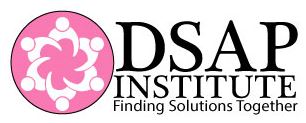Profile
This Is How Integrated German Model Will Look Like In 10 Years Understanding the Integrated German Model: A Comprehensive Overview The integrated German model, often described as the "German design," is a distinct system that intertwines economic growth, social equity, and a strong focus on professional training. sprachzertifikat a1 has amassed attention for its ability to keep a high level of employment, strong commercial production, and a robust welfare state. This post digs into the elaborate layers of the integrated German model, analyzing its history, structure, benefits, and possible difficulties. By the end, readers will have a clearer understanding of this noteworthy financial framework and its ramifications for other nations. Historical Context Germany's economic structure has evolved significantly over the previous century. The post-World War II age caused the requirement for reconstruction, resulting in the establishment of a social market economy. Social market economy principles concentrated on balancing free-market capitalism with social policies that make sure fair competition and a safety net for residents. Over the decades, the country's financial policies have actually adjusted to internal shifts and global modifications. The reunification in 1990 provided brand-new difficulties and opportunities, prompting modifications in labor laws, training programs, and well-being provisions. This development has resulted in the present integrated German design, which integrates different sectors and stakeholders. Secret Features of the Integrated German Model The integrated German model is characterized by several crucial elements that work cohesively to promote economic stability and social equity: 1. Vocational Training and Education A cornerstone of the German model is its dual education system, which combines class learning with practical on-the-job experience. Apprenticeship Programs: Students generally go into employment programs at age 16, where they invest part of their time in a company and the other part in school. Industry-Specific Training: Companies play a crucial function in training workers customized to fulfill the specific needs of their industry. 2. Strong Bilateral Relationships The integrated model helps with collaboration among stakeholders, including: Market and Trade Unions: Open discussion encourages collective bargaining and cooperation. Federal government: The state develops policies that promote a well balanced relationship between service and labor interests. 3. click here now 's well-being state is extensive, designed to provide residents with: Health Care and Pension Schemes: Universal healthcare, retirement advantages, and joblessness insurance coverage are essential elements of the well-being system. Support for Families: Childcare support and parental leave initiatives demonstrate a dedication to household well-being. 4. Economic Stability Germany's financial framework emphasizes: Export-Led Growth: With a strong production base, Germany is among the world's leading exporters, focusing on quality and innovation. Financial Responsibility: The federal government maintains sound fiscal policies to guarantee long-lasting economic sustainability. 5. Environmental Sustainability Just recently, the German model has actually likewise integrated principles of sustainability, ending up being a frontrunner in renewable resource and environment-friendly practices. Benefits of the Integrated German Model The integrated German model offers several advantages that have made it a topic of affection worldwide: Low Unemployment Rates: High levels of vocational training cause an experienced workforce that fulfills industry demands. Strong Economic Performance: Germany has one of the largest economies in the European Union and one of the strongest globally, with a low average debt-to-GDP ratio. Social Cohesion: By guaranteeing broad access to social advantages, the model helps to decrease inequalities and supports social movement. Promoting Innovation: Close cooperation between organizations and universities promotes a culture of development. Difficulties Faced by the Integrated German Model Despite its benefits, the integrated German design is not without challenges. Aging Population: Germany deals with group shifts that could strain its social security system and workforce availability. Worldwide Competition: Increased globalization and competitors require constant adaptation and development within industries. Regional Disparities: Economic distinctions between Eastern and Western areas still continue, coming from historical aspects and differing levels of financial investment. FAQs Q1: What makes the German trade training system unique? A1: The double education system combines theoretical understanding with useful training in an office, guaranteeing that students obtain pertinent abilities that satisfy market requirements. Q2: How does the integrated German design promote social equality? A2: By offering extensive social well-being programs and making sure access to education and job training, the design develops a framework that supports social movement and lowers economic disparities. Q3: What role does the federal government play in the German financial design? A3: The federal government controls and helps with cooperation in between companies and labor unions, creates social well-being policies, and buys education and facilities to promote economic growth. Q4: Can other countries embrace the integrated German model? A4: While elements of the integrated German model could be adapted or embraced by other countries, the special historical, cultural, and economic contexts should be considered for successful implementation. Conclusion The integrated German design stands as a robust and versatile financial framework that stresses occupation training, social equity, and partnership in between federal government, market, and labor. While obstacles exist, its strengths have actually made Germany a leading example of how a balanced technique can yield significant benefits. As other nations look for to renew their economies and enhance social welfare, understanding the complexities of the integrated German model might supply valuable insights for future policies.
Forum Role: Participant
Topics Started: 0
Replies Created: 0
